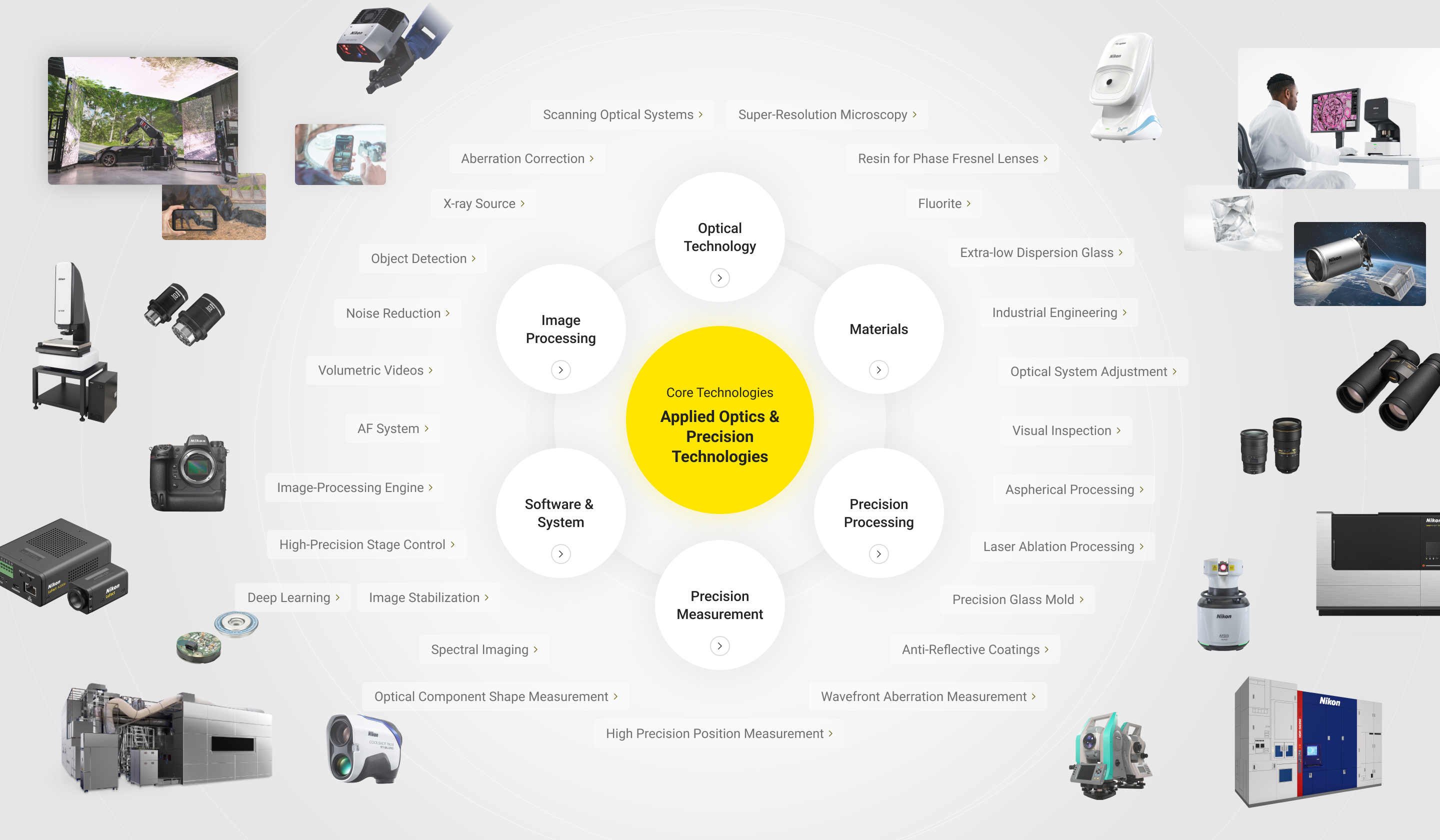Nikon Technology Fields
Nikon’s technology is characterized by its use of light and its precision. With applied optics and precision technologies as our core technologies, we are developing a wide range of technologies, including “Optical Technology,” “Materials,” “Precision Processing,” “Precision Measurement,” “Software & System” and “Image Processing”.
Products and services created by combining these technologies will provide our society with diverse values and open up future possibilities that Nikon aims to achieve.
Two Core Technologies
Freely controls light
“Applied Optics”
This technology is capable of handling light in a wide wavelength range, from X-rays to infrared rays, with high precision. We can provide products and services tailored to a variety of purposes.
Controls nanometers
“Precision Technologies”
Nikon’s diverse precision technologies support our society in many situations, including technology for highly accurate overlaying of electronic circuits at the nanometer level (semiconductor lithography systems).

Core TechnologiesApplied Optics
&
Precision
Technologies
Nikon also develops technologies that support manufacturing.
